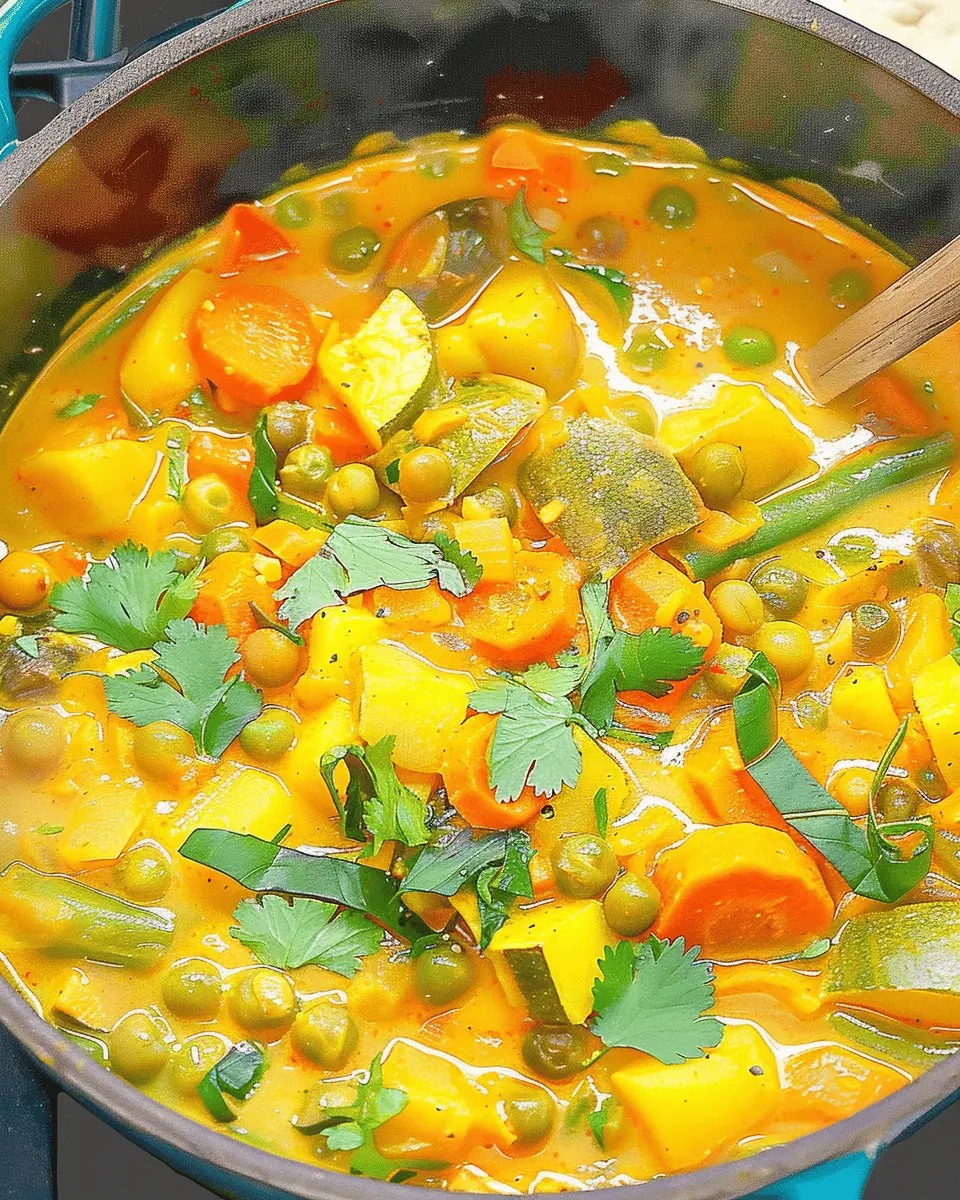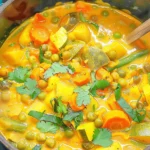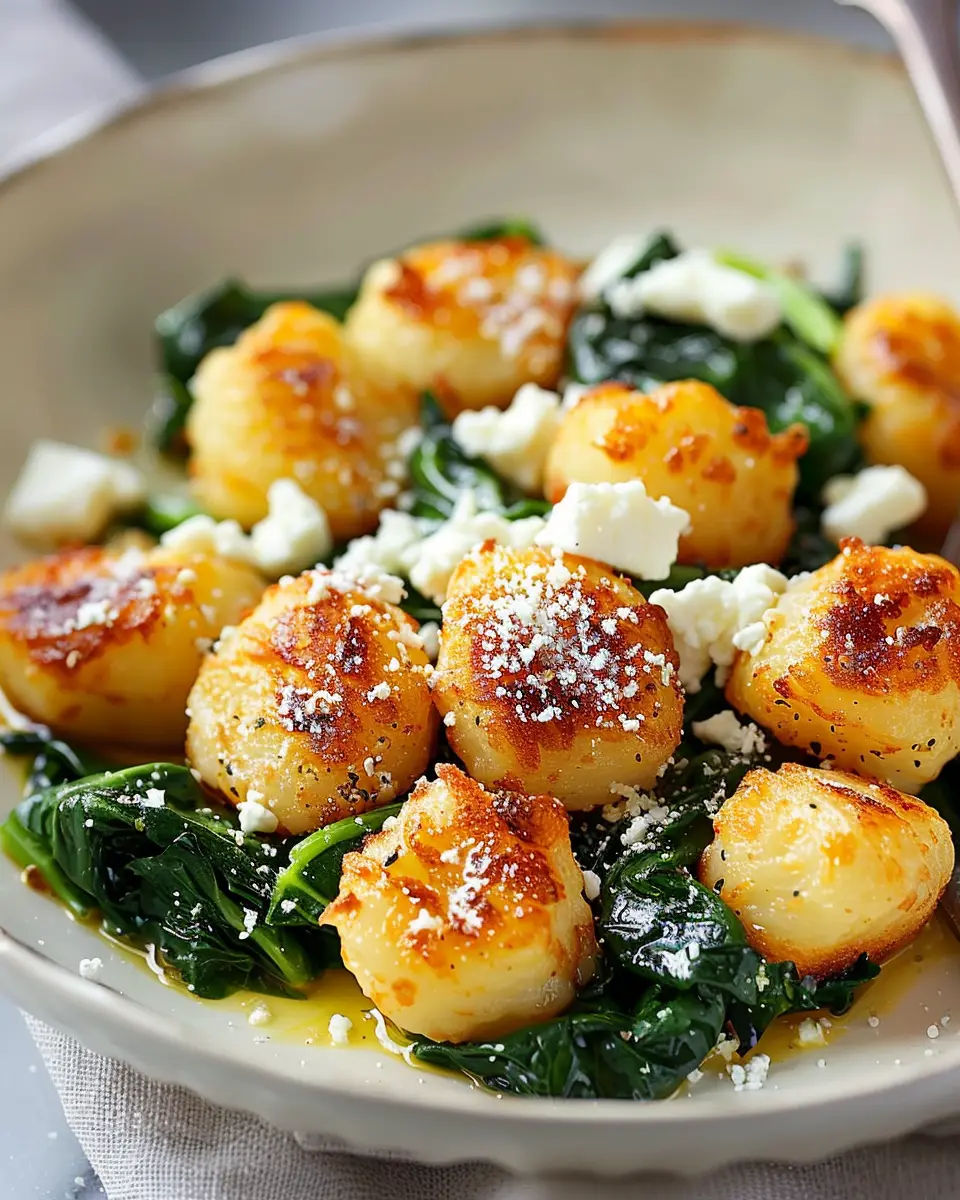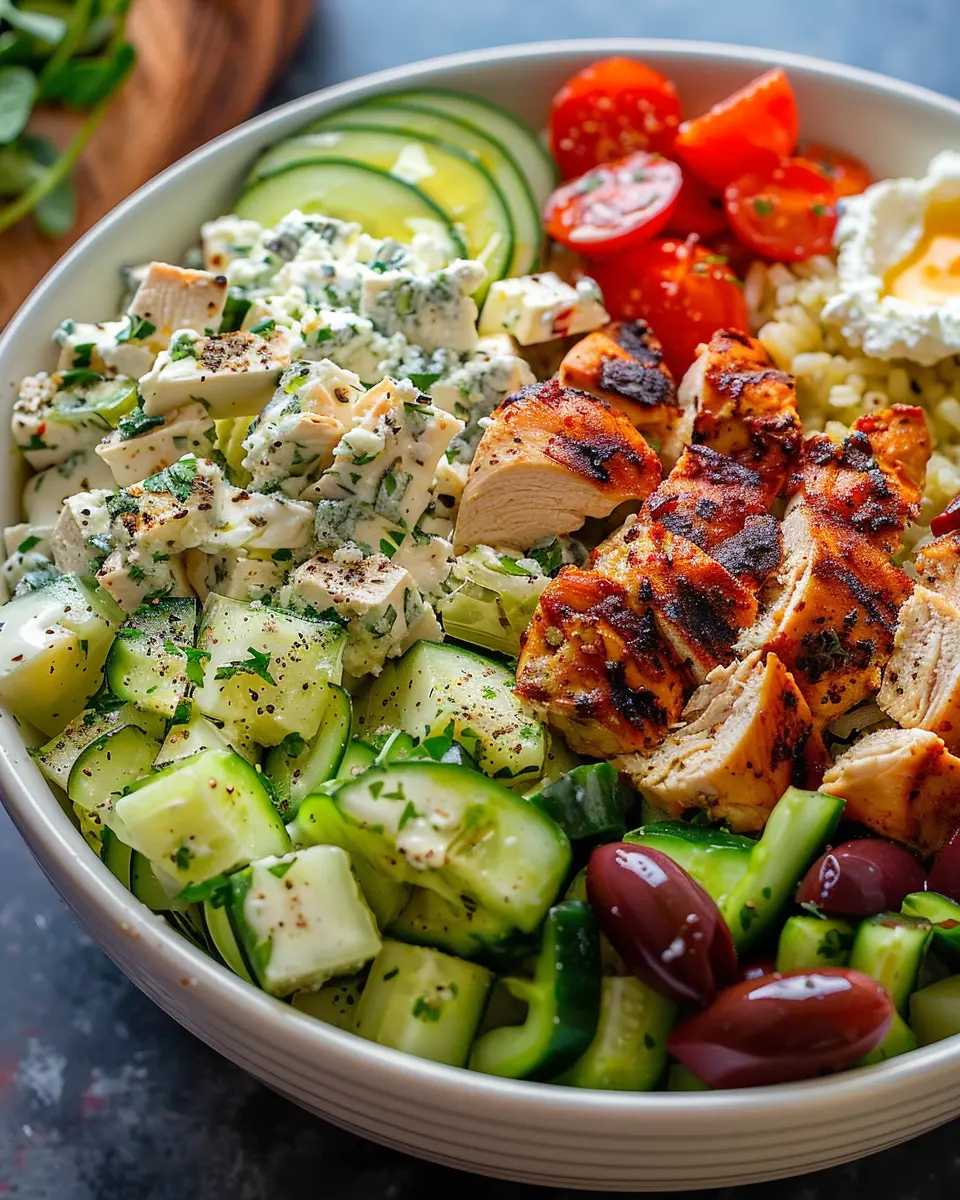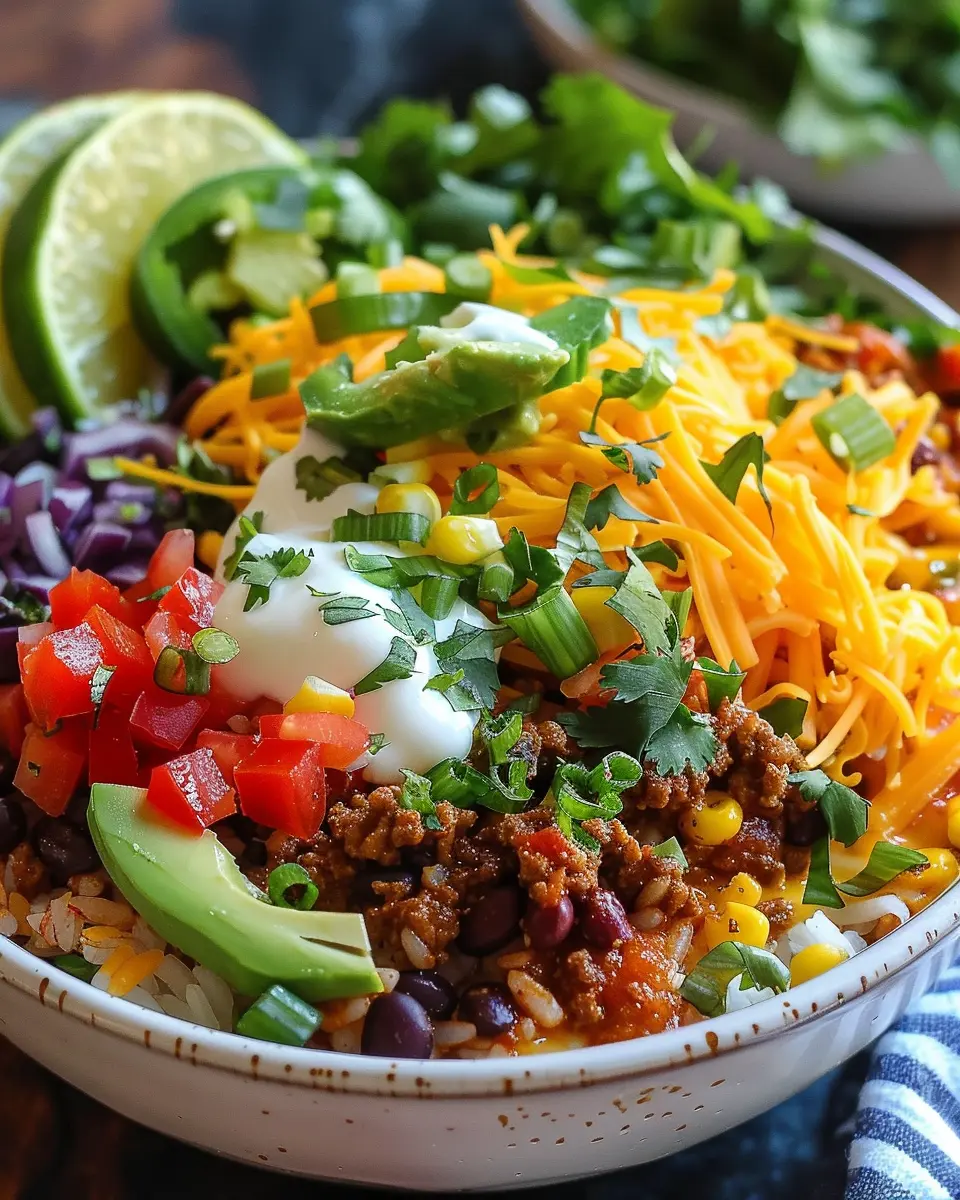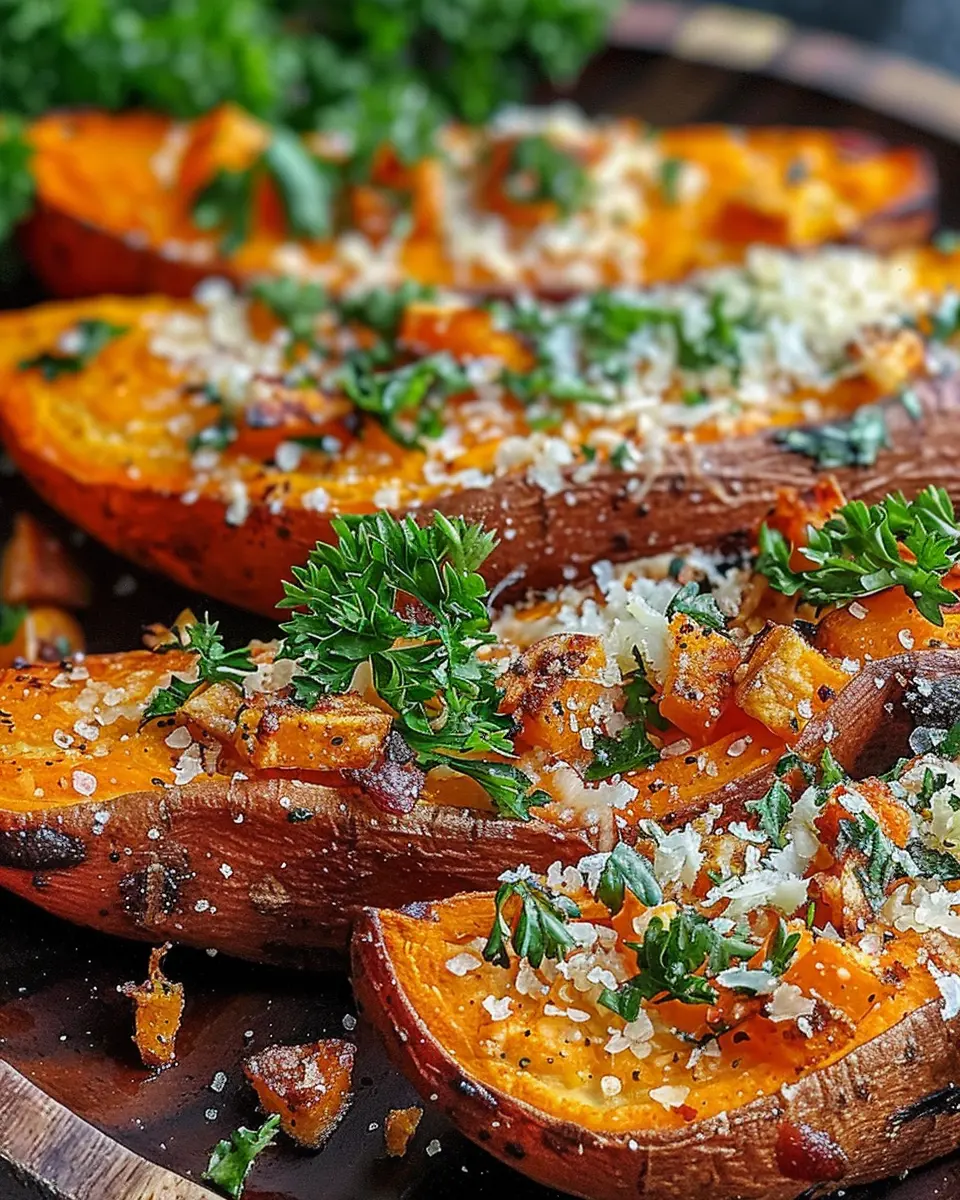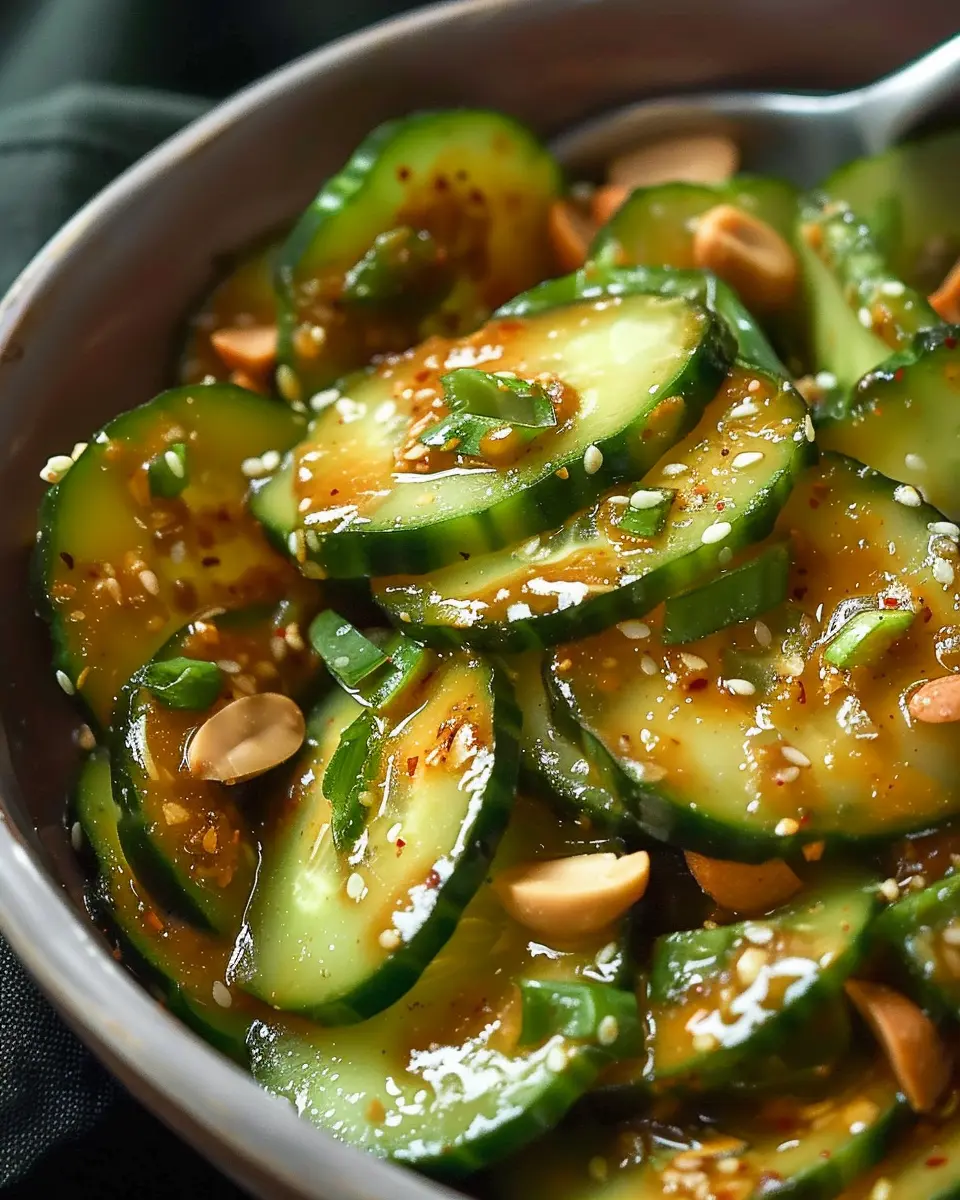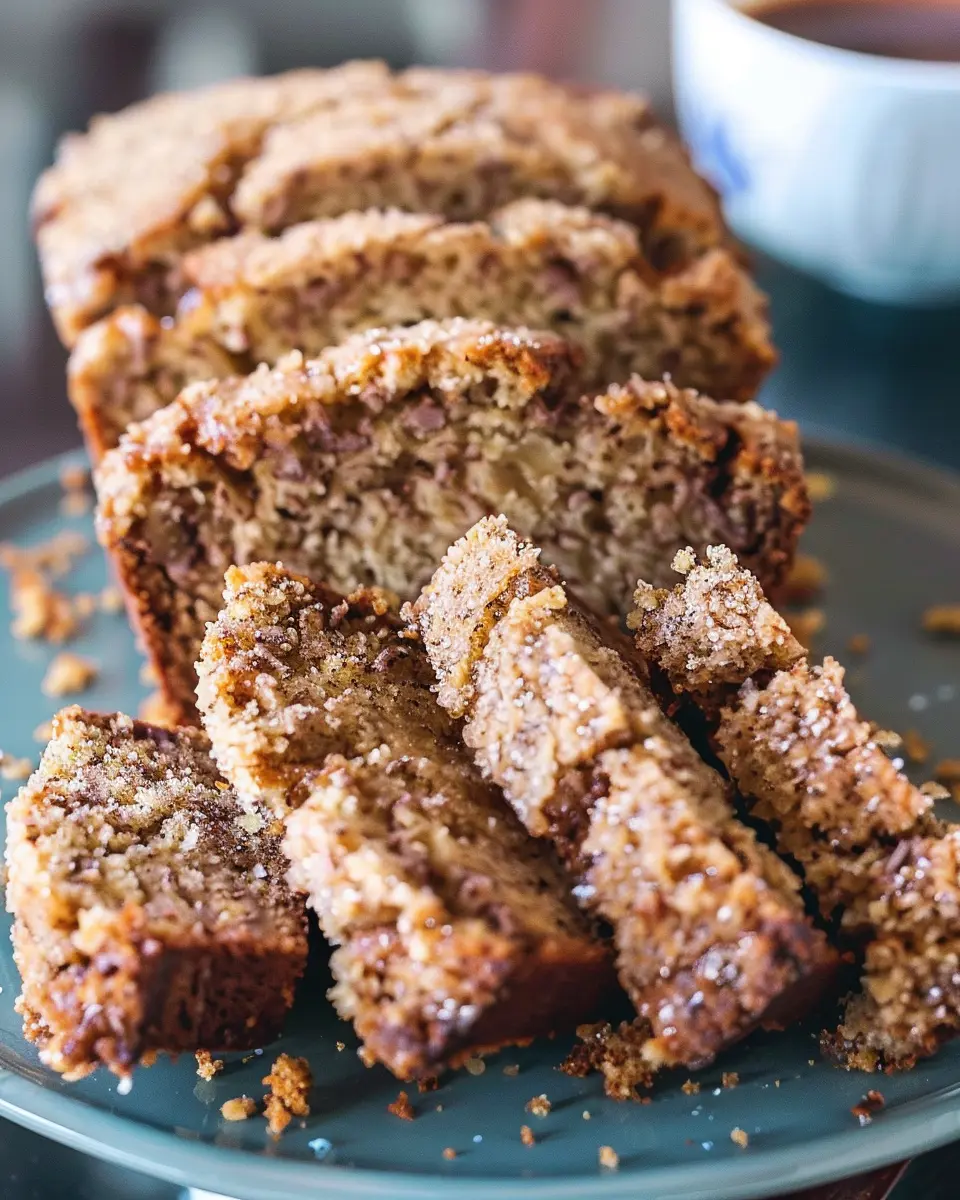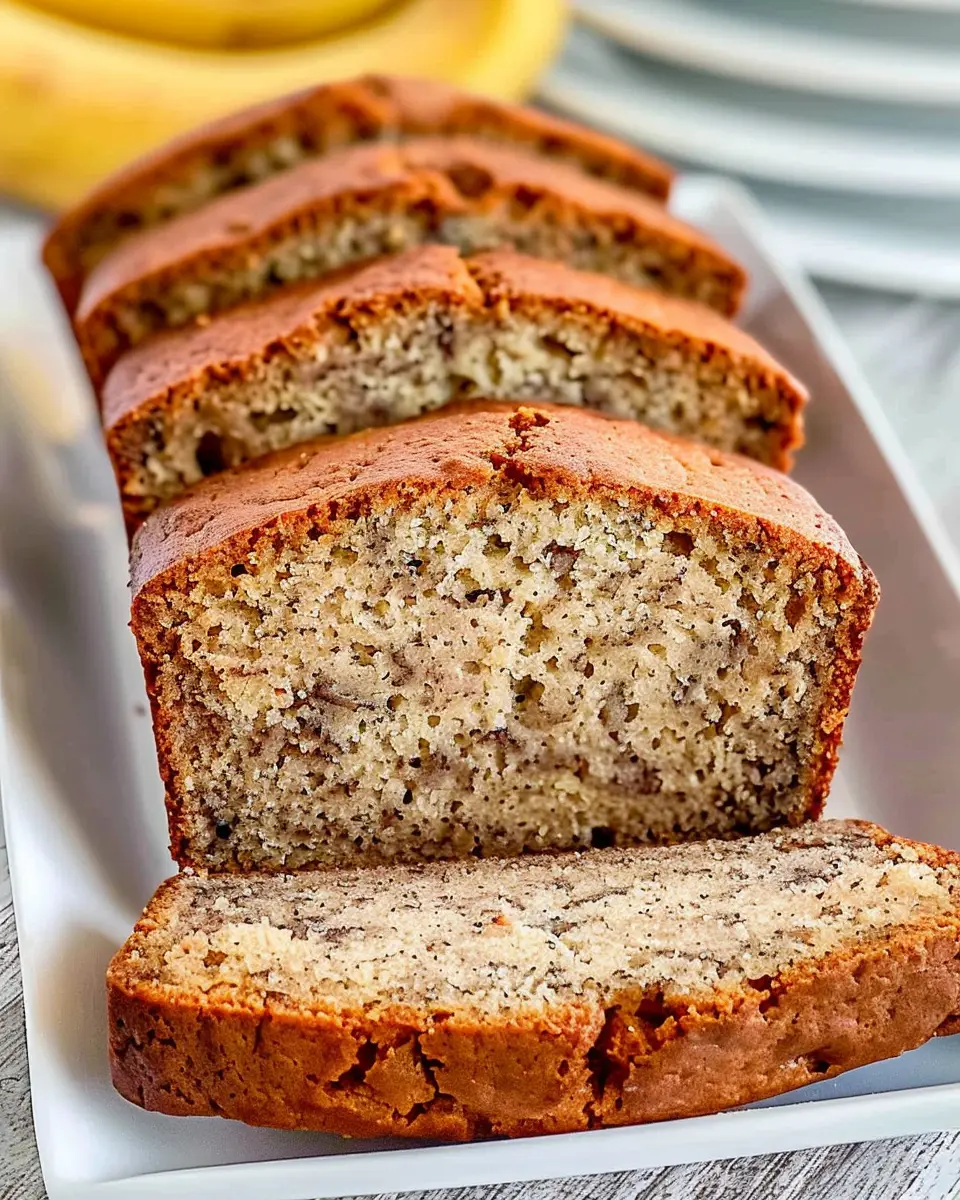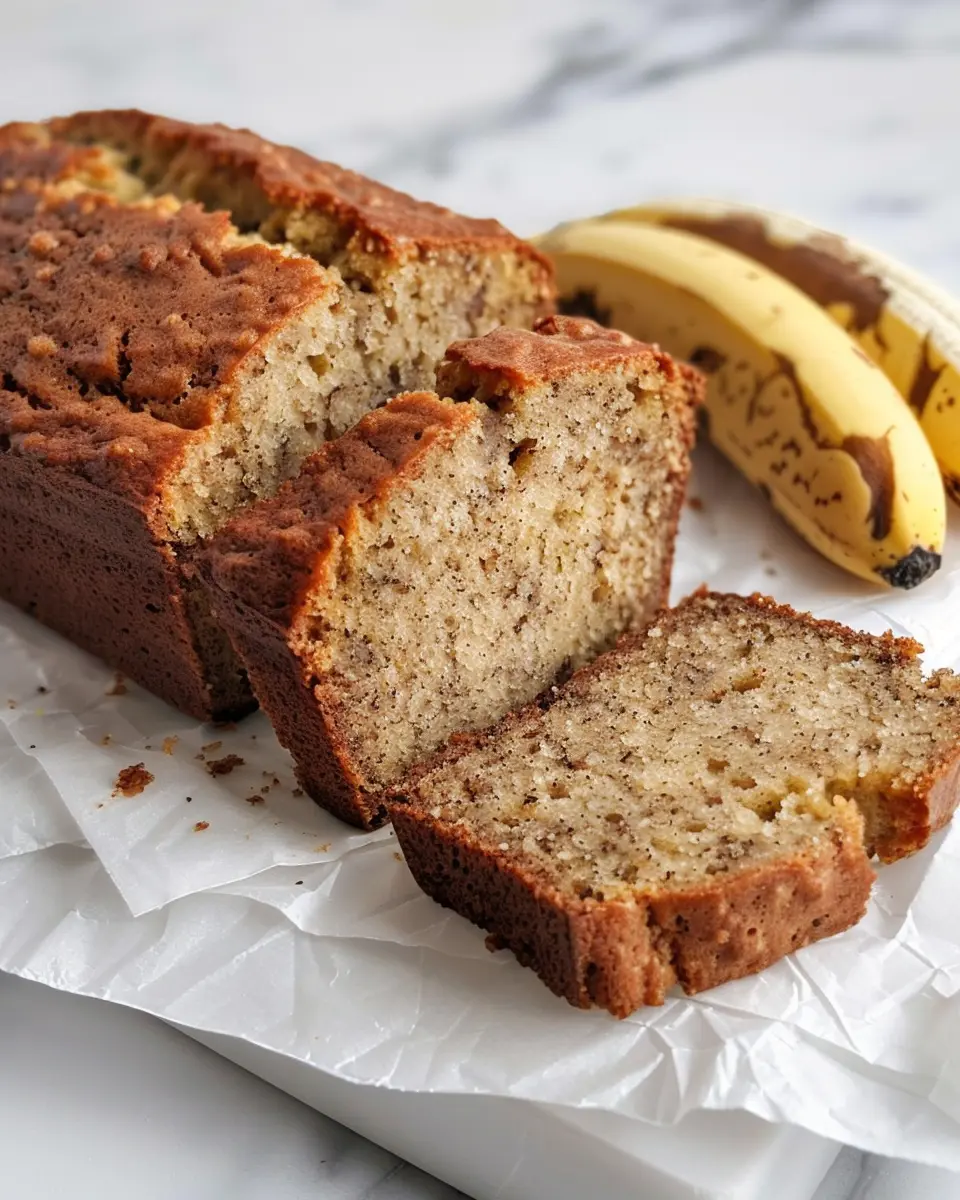Introduction to Easy Vegetable Curry
If you’re looking to whip up a nutritious, delicious meal in no time, an easy vegetable curry might just be your next go-to dish! This one-pot wonder is perfect for busy young professionals seeking to balance taste, health, and convenience. Plus, it’s adaptable, so you can use whatever veggies you have on hand. Talk about a win-win!
Why Choose Homemade Vegetable Curry?
Homemade meals often pack a punch that takeout simply can’t match. When you prepare your own easy vegetable curry, you control the ingredients, ensuring your dish is not only healthier but also tailored to your taste preferences. Did you know that cooking at home can save you money and calories? According to a study by the Harvard School of Public Health, home-cooked meals can be significantly lower in calories than restaurant meals, allowing you to enjoy a tasty dish without the guilt.
Incorporating seasonal vegetables not only enhances the flavor but is also a great way to support local agriculture and reduce your carbon footprint. Seasonal produce contains more nutrients and is often more affordable. Think of vibrant bell peppers, hearty carrots, and leafy greens dancing in a warm, spicy sauce. The versatility of this easy vegetable curry means you can play with flavors and customize your spice levels, making it as mild or fiery as you like.
Quick to Make and Nourishing
One of the best aspects of this recipe is its speed. In just 30 minutes, you can create a filling dish that’s full of vitamins, minerals, and fiber—ideal for maintaining energy during your busy days. Imagine coming home from work and, instead of ordering takeout, you can create a wholesome meal that feels just as comforting.
To get started, you’ll need a few simple ingredients you likely already have, along with spices that make your taste buds sing. Fresh herbs, garlic, and ginger will bring depth and aroma to your curry, while coconut milk adds creaminess without the dairy.
Are you ready to dive into this culinary adventure? Let’s simplify dinner with an easy vegetable curry recipe that’s waiting to be explored!

Ingredients for Easy Vegetable Curry
Essential vegetables for a flavorful curry
Creating an easy vegetable curry begins with choosing the right vegetables. Go for a mix of your favorites for a colorful plate and delicious taste:
- Bell Peppers: They add sweetness and crunch.
- Carrots: Their natural earthiness boosts flavor.
- Zucchini: This vegetable adds a bit of creaminess when cooked.
- Spinach or Kale: For a nutrient-packed boost, these leafy greens are perfect.
- Cauliflower: A great texture and absorbs flavors beautifully.
These vegetables not only contribute to the dish’s richness but also ensure you’re getting a variety of nutrients. Check out Healthline for a deeper dive into the benefits of each!
Spices that elevate your dish
No easy vegetable curry is complete without spices! They transform ordinary ingredients into an extraordinary meal. Here are some must-haves:
- Cumin: Offers a warm earthy base.
- Coriander: Adds a light citrus note.
- Turmeric: Known for its vibrant yellow color and anti-inflammatory properties.
- Garam Masala: A complex blend that ties everything together.
These spices not only enhance the flavor but also provide various health benefits. Explore more about the wonders of spices on WebMD.
Alternative ingredients for a personal touch
Want to make your easy vegetable curry unique? Here are a few alternative ingredients to consider:
- Coconut Milk: For a rich, creamy texture, swap in coconut milk. It’s a fantastic dairy-free option.
- Chickpeas or Lentils: Add protein and fiber by including these. They make the curry more filling!
- Turkey Bacon or Chicken Ham: For a hint of savory depth, consider adding these.
Feel free to play with different ingredients; it’s all about what you love! What will your signature twist be?
Preparing Easy Vegetable Curry
Making an easy vegetable curry in just 30 minutes may sound like a tall order, but trust me, you can whip this up effortlessly. This one-pot dish is not only a comfort food classic but also a fantastic way to sneak in a variety of veggies. Let’s dive into the preparation process step by step.
Gather and prepare your ingredients
Before you fire up the stove, it’s crucial to gather all your ingredients. This will save you those frantic moments of searching for a missing item mid-cooking. Here’s a handy list to get you started:
- Vegetables: Choose a mix of your favorites—think bell peppers, carrots, zucchini, and cauliflower. Frozen mixed vegetables can also be a great shortcut!
- Aromatics: Don’t forget garlic and ginger! They’re the superheroes in flavors.
- Curry Powder: A blend of spices that gives your dish that signature kick. You can even try making your own blend if you’re feeling adventurous.
- Coconut milk: This will help create a creamy texture and rich flavor.
- Vegetable broth: Opt for low-sodium to control the salt levels.
- Protein option (optional): Consider adding chickpeas or tofu for added nutrition.
Feel free to check out sources like Healthline for more information about the nutritional benefits of vegetables if you’re curious.
Sauté the aromatics
Once your ingredients are prepped, it’s time to unleash those lovely flavors. Heat a splash of oil in your pot on medium heat. When it’s shimmering, add minced garlic and grated ginger. Sauté for about 2-3 minutes until fragrant.
Why is this step important? Well, the aromatics are critical to building the dish’s flavor profile. The sizzling sounds are music to your ears, and this is where the magic begins!
Add the vegetables and spices
Now that your kitchen smells divine, it’s time to toss in your veggies. Start with the firmer ones—like carrots and cauliflower—because they take longer to cook. Stir them in and let them sauté for about 5 minutes.
After that, add your curry powder. Here’s where you can get a little creative! If you’re keen on spice, consider adding some cayenne pepper or chili flakes to amp up the heat. Cook this mix for an additional minute to allow the spices to bloom.
Did you know that spices not only enhance flavor but can also offer health benefits? For instance, turmeric, one of the core ingredients in curry powder, has anti-inflammatory properties. Adding it to your meals can be a simple way to boost your health.
Pour in the liquids
Once your veggies and spices are well-combined and smelling irresistible, it’s time for the liquids. Pour in your coconut milk and vegetable broth, stirring well to combine everything. The ratio here is crucial; you want a nice balance—too little liquid, and you’ll have a dry curry; too much, and it’ll be soupy!
Aim for a consistency that looks inviting and creamy—your mouth will water just looking at it!
Simmer to perfection
Now comes the best part—simmering! Bring your curry to a gentle boil, then lower the heat and let it simmer for about 15-20 minutes. During this time, the vegetables will soften, and the flavors will meld together beautifully.
You can use this time to finish setting the table or whip up a quick side of rice or naan to serve with your curry. Pro tip: If you have any fresh herbs at home like cilantro or parsley, chop some up and sprinkle them on just before serving for a burst of freshness!
In the end, you’ll have a delicious easy vegetable curry that’s perfect for weeknight dinners or meal prep for the week ahead. Enjoy the vibrant flavors, and don’t forget to share your creation with those you love!
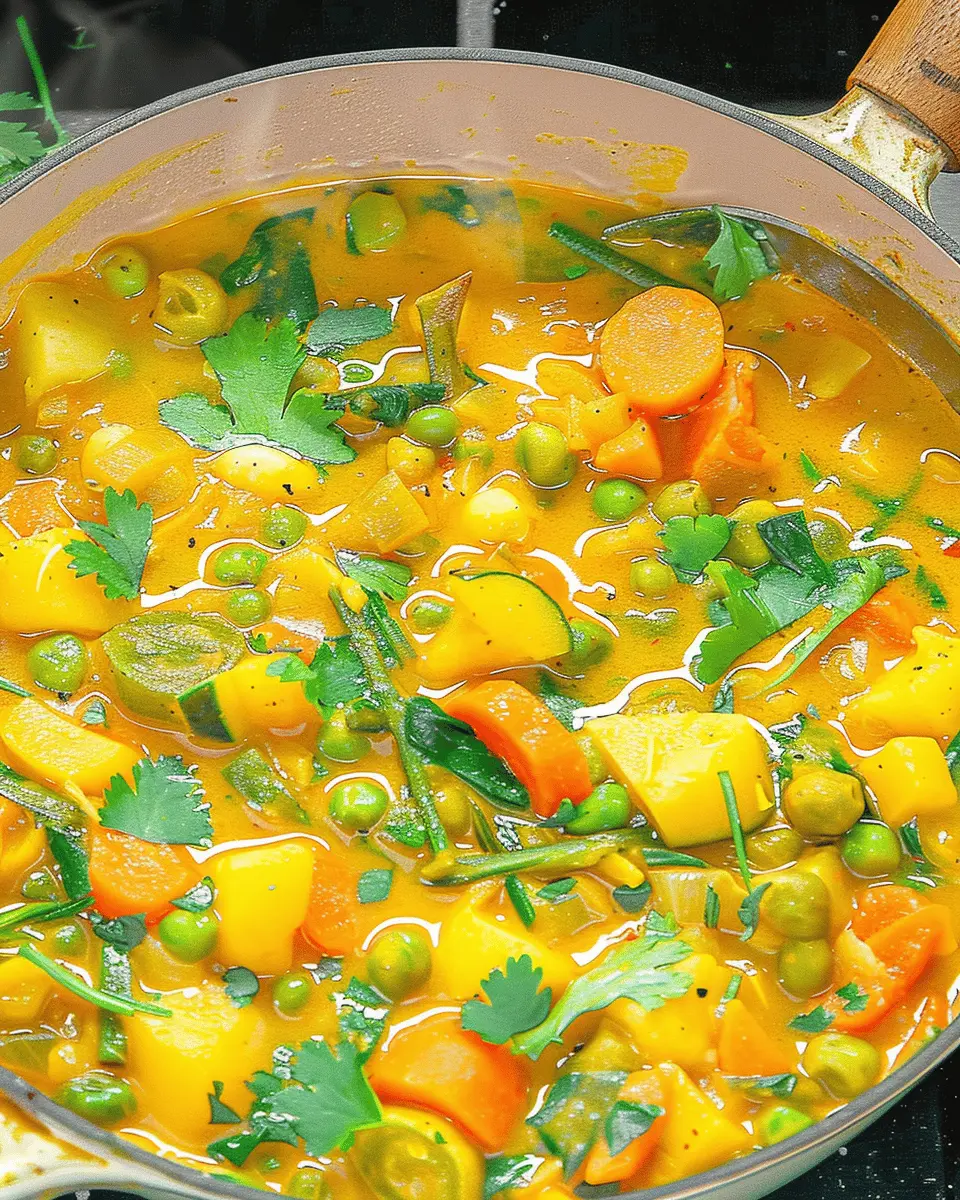
Variations on Easy Vegetable Curry
When you think about an easy vegetable curry, the possibilities are nearly endless! Here are two delightful twists you can try that will transform your dish while keeping it simple and quick.
Coconut Curry with a Tropical Twist
Imagine a creamy, rich curry infused with the sweetness of coconut milk and tropical flavors! To create this variation:
- Start with your usual vegetable base, such as bell peppers, carrots, and cauliflower.
- Add a can of coconut milk for that luscious texture.
- Incorporate ingredients like pineapple chunks for an extra burst of sweetness or lime juice for some zing.
- Spice it up with a sprinkle of turmeric and a few fresh basil leaves to hint at Southeast Asian inspiration.
This version not only offers a great taste but is also a fantastic way to sneak in some fruit into your meal!
Spicy Chickpea and Vegetable Curry
If you’re in the mood for some heat, this chickpea variation is calling your name. Packed with protein and fiber, it’s nutritious and filling. For this recipe:
- Use a base of onions and ginger-garlic paste for depth of flavor.
- Toss in canned chickpeas to boost the protein content and make your curry even heartier.
- Season with spices like cumin, coriander, and a touch of cayenne pepper to satisfy the spice lovers.
- Serve with a side of basmati rice or naan bread for a complete meal.
This version is perfect for those busy weeknights when you crave something that’s both satisfying and bursting with flavor!
Final Thoughts
Experimenting with your easy vegetable curry can turn an ordinary dish into an exciting culinary adventure. Have you tried any variations that you absolutely loved? Share your experiences, and don’t hesitate to mix things up! For more inspiration, you can check out this coconut curry recipe or explore healthy chickpea dishes. The kitchen is your playground—enjoy making it your own!
Cooking tips and notes for Easy Vegetable Curry
Common mistakes to avoid
Making an easy vegetable curry can be a breeze, but a few common pitfalls can trip you up.
- Overcooking vegetables: Keep in mind that fresh produce should remain vibrant and crisp. Add tougher vegetables like carrots first and delicate ones like spinach later to prevent mushiness.
- Skipping the sauté: Never underestimate the power of sautéing your onions and garlic until fragrant. This step builds a flavor foundation that elevates the entire dish.
- Ignoring seasoning: Salt is crucial! It enhances the flavors of your vegetables. Taste as you go and adjust accordingly.
Adjusting spice levels
Finding your perfect spice balance can make your easy vegetable curry exceptionally delightful.
- Start small: If you’re unsure about heat, begin with less chili powder or fresh chili, then adjust gradually.
- Creaminess saves the day: If it turns out too spicy, a dollop of yogurt or a splash of coconut milk can help mellow the heat. Check out this guide on adjusting spice levels for more insights.
Cooking should be fun, so don’t hesitate to experiment until you find your ideal flavor profile!
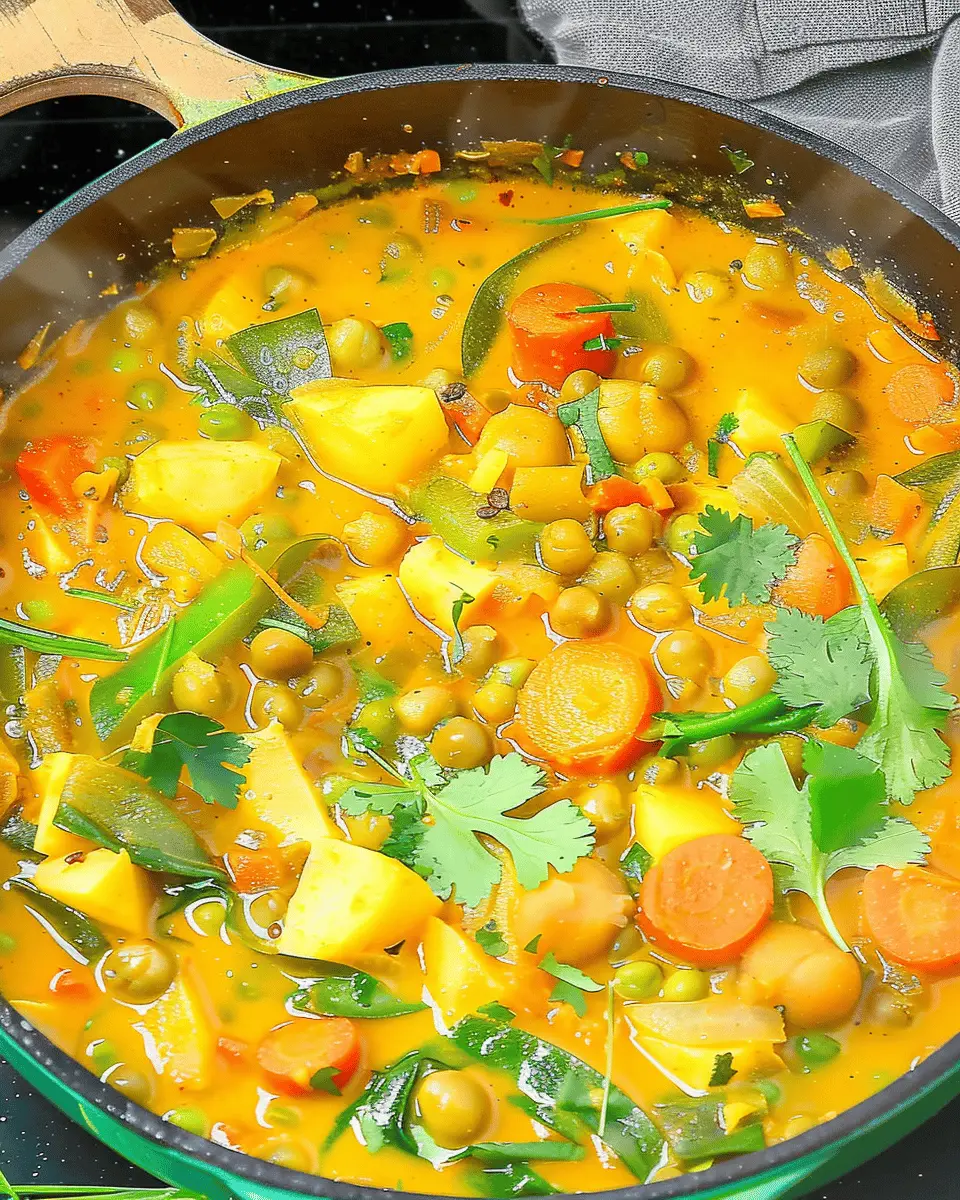
Serving suggestions for Easy Vegetable Curry
Pairing with Rice and Breads
When it comes to serving your easy vegetable curry, think about comfort! A steaming bowl of rice is a classic pairing, soaking up all those rich, aromatic flavors. Brown rice or jasmine rice both work beautifully. If you’re in the mood for something a bit more indulgent, naan or paratha is a great option. You can find simple homemade naan recipes here, which make for a great companion to your curry.
Garnishing for Presentation
Let’s not forget about presentation! Sprinkling fresh cilantro or chopped green onions on top of your easy vegetable curry adds a beautiful burst of color. A drizzle of coconut cream can also elevate the dish visually and flavor-wise. For a playful twist, try adding some toasted nuts or seeds for that extra crunch.
Remember, garnishing isn’t just about looks; it enhances the overall taste experience. Feel free to experiment and make it your own!
Time Breakdown for Easy Vegetable Curry
Preparation Time
Getting ready for your easy vegetable curry is quick and simple. You’ll need about 10 minutes to chop up your favorite vegetables, gather all your spices, and measure out your ingredients. Don’t forget to wash your veggies; cleanliness is key!
Cooking Time
Once everything’s prepped, it’s time to start cooking. The actual cooking process will take approximately 20 minutes. Just throw everything into one pot and let the flavors meld together—easy peasy!
Total Time
In total, you’re looking at around 30 minutes from start to finish. Perfect for a busy weeknight dinner! For more tips on meal prep that fit your lifestyle, check out resources like The Kitchn for efficient cooking strategies.
Nutritional facts for Easy Vegetable Curry
Calories and macros
This easy vegetable curry serves up a deliciously satisfying meal while keeping the calorie count in check. Each serving contains approximately 250-300 calories, depending on the specific vegetables and portion sizes you use. The macros typically break down as follows:
- Protein: 5-10g (varies with added beans or tofu)
- Carbohydrates: 40-50g (from veggies and possibly basmati rice)
- Fat: 6-10g (mostly from healthy oils)
Health benefits of the ingredients
The real charm of an easy vegetable curry lies in its wholesome ingredients—think vibrant bell peppers, leafy spinach, and nutrient-packed carrots. Here are some health benefits of key components:
- Turmeric: Packed with curcumin, an antioxidant known for its anti-inflammatory properties.
- Chickpeas: A fantastic source of plant-based protein and fiber, supporting digestive health.
- Coconut milk: This adds creaminess while providing medium-chain triglycerides (MCTs) beneficial for energy.
For more information on the health benefits of turmeric and other spices, you can visit Healthline.
Crafting a delicious and nutritious meal like this easy vegetable curry allows you to savor every bite while nourishing your body. It’s perfect for busy young professionals looking to eat well without spending hours in the kitchen!
FAQs about Easy Vegetable Curry
Can I use frozen vegetables instead of fresh?
Absolutely! Using frozen vegetables is a fantastic way to save time and still enjoy a nutritious meal. In fact, many frozen vegetables are flash-frozen right after harvest, so they can be just as nutritious as fresh ones. Just be sure to add them to the pot a few minutes earlier than fresh vegetables to ensure everything cooks evenly. If you’re looking to simplify prep, check out options like frozen mixed veggies or individual varieties such as peas and spinach. They blend perfectly into your easy vegetable curry!
How do I store leftovers?
Storing leftovers from your easy vegetable curry is super simple. Just let it cool down to room temperature, then transfer it into airtight containers. You can keep your curry in the refrigerator for about 3–4 days. If you want to extend its shelf life, consider freezing it! Just scoop portions into freezer-safe containers, leaving some space for expansion. When you’re ready to eat, reheat it on the stovetop or microwave until it’s piping hot. For tips on storing various foods, you might want to check out resources from FoodSafety.gov.
What are some good protein additions?
While your easy vegetable curry is already nutritious, adding protein can enhance the dish significantly. Here are some options you might consider:
- Tofu or Tempeh: Great vegetarian choices that soak up the curry flavors beautifully.
- Turkey Bacon: For a flavorful, smoked touch without the guilt.
- Chicken Ham: Adds a great meaty texture and protein punch.
- Canned chickpeas or lentils: Excellent sources of plant-based protein.
Experimenting with these additions offers great variety and keeps your meals exciting. After all, who doesn’t love a customizable dish?
Conclusion on Easy Vegetable Curry
When it comes to comfort food, nothing beats a homemade easy vegetable curry. Creating this dish in your own kitchen allows you to control the ingredients, making it healthier without sacrificing flavor. Plus, with the vibrant colors and aromatic spices, cooking becomes a delightful experience.
By choosing fresh vegetables and natural spices, you gain the benefits of nutrition, flavor, and even cost savings compared to takeout options. Remember, making an easy vegetable curry not only brightens your meal prep but also serves as a canvas for your culinary creativity. Ready to stir up some flavorful moments? For more tips on healthy cooking, check out this resource on healthy eating from the CDC.
PrintEasy Vegetable Curry: A Quick, Delicious One-Pot Dinner in 30 Minutes
An easy and quick recipe for a delicious vegetable curry that can be made in just 30 minutes, all in one pot.
- Prep Time: 10 minutes
- Cook Time: 20 minutes
- Total Time: 30 minutes
- Yield: 4 servings 1x
- Category: Dinner
- Method: Stovetop
- Cuisine: Indian
- Diet: Vegan
Ingredients
- 1 tablespoon olive oil
- 1 onion, chopped
- 2 cloves garlic, minced
- 1 tablespoon curry powder
- 1 can (14 oz) diced tomatoes
- 1 cup vegetable broth
- 2 cups mixed vegetables (such as bell peppers, carrots, and peas)
- 1 can (15 oz) chickpeas, drained and rinsed
- 1 teaspoon salt
- 1/2 teaspoon pepper
- 1/2 cup coconut milk
- 2 cups cooked rice, for serving
Instructions
- Heat olive oil in a large pot over medium heat.
- Add onion and garlic, sauté until onions are translucent.
- Stir in curry powder and cook for an additional minute.
- Pour in diced tomatoes and vegetable broth, bring to a boil.
- Add mixed vegetables and chickpeas to the pot, reduce heat and simmer for 15 minutes.
- Season with salt and pepper, then stir in coconut milk.
- Serve over cooked rice.
Notes
- This curry can be made ahead of time and reheated.
- Feel free to substitute with your favorite vegetables.
Nutrition
- Serving Size: 1 cup
- Calories: 350
- Sugar: 5g
- Sodium: 800mg
- Fat: 12g
- Saturated Fat: 5g
- Unsaturated Fat: 7g
- Trans Fat: 0g
- Carbohydrates: 50g
- Fiber: 8g
- Protein: 12g
- Cholesterol: 0mg
Keywords: Easy Vegetable Curry, One-pot, 30 minutes
